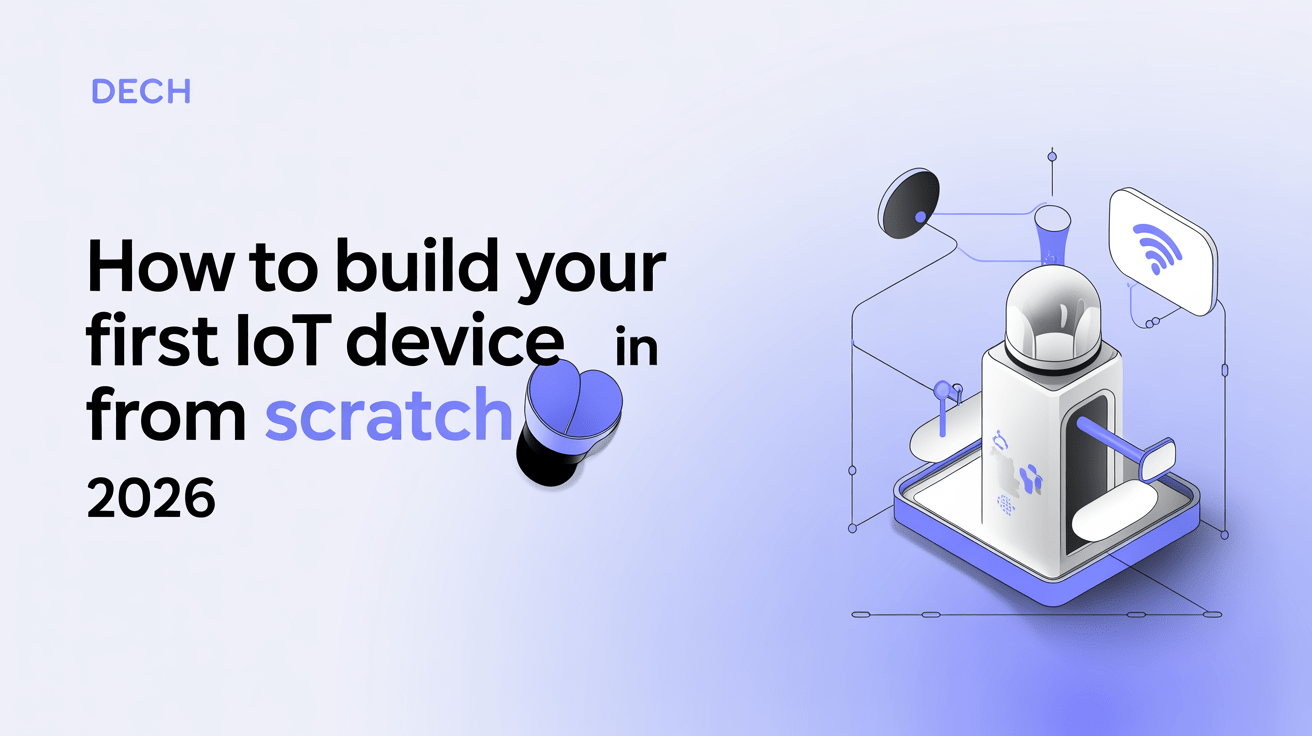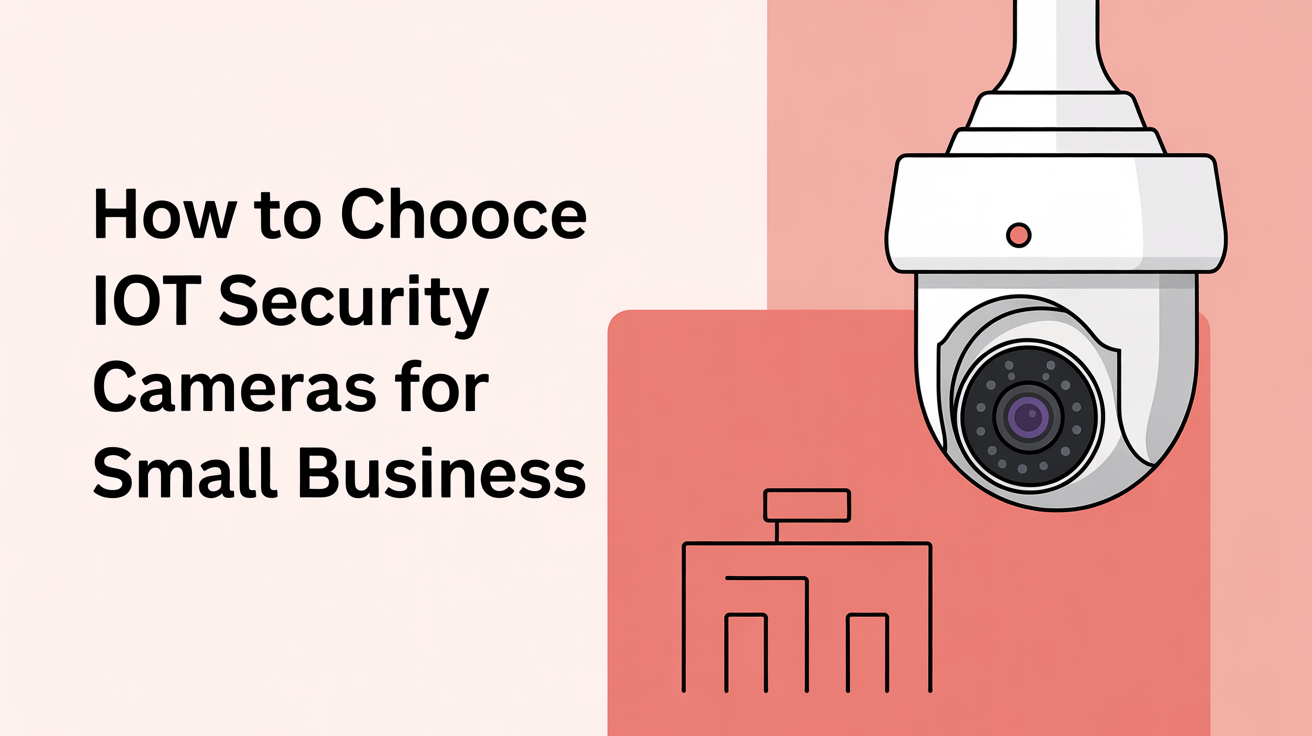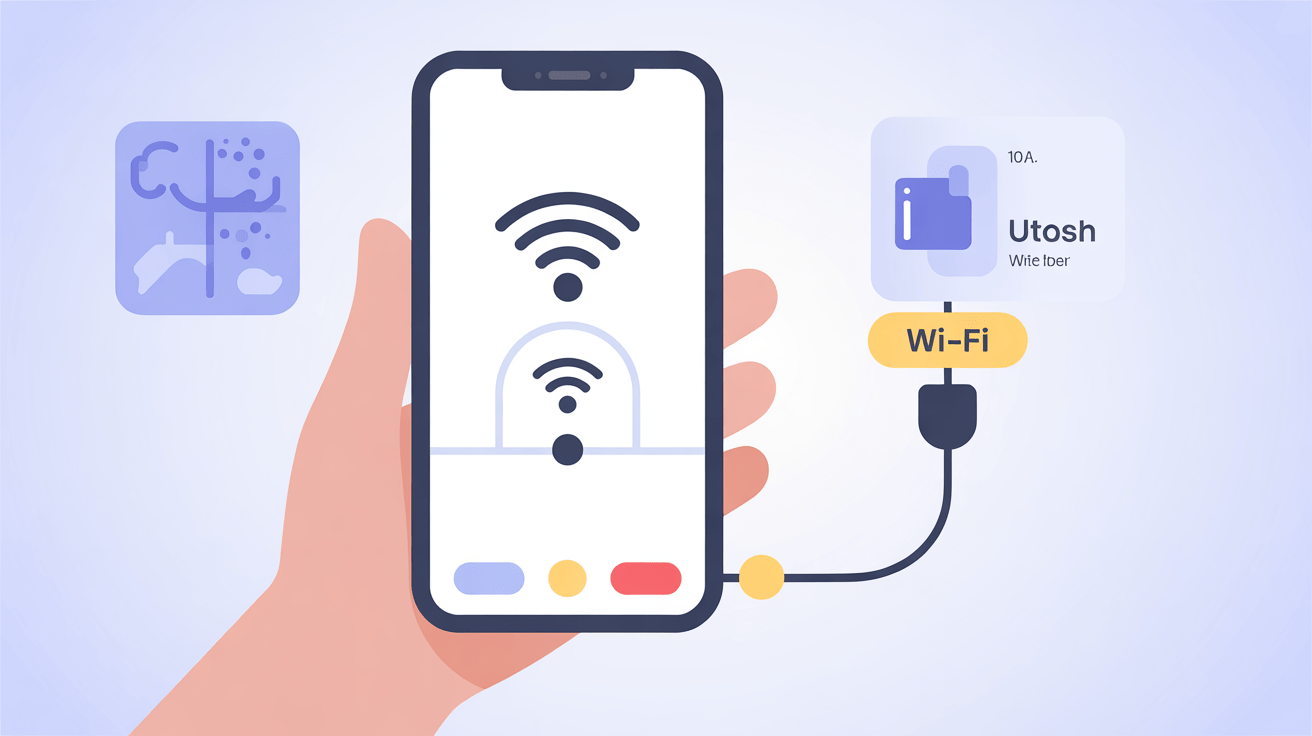
Building your own IoT device can be both exhilarating and intimidating. Rather than rehash high-level theory, this guide draws on hands-on projects from hobbyists and engineers to walk you through the concrete steps needed to create a functional prototype in 2026. We’ll cover how to choose a microcontroller, wire sensors, write firmware, and connect to cloud services for real-time monitoring. By combining technical tips with personal anecdotes and lessons learned, you’ll gain the confidence to design and deploy your first IoT device tailored to your goals.
Understanding IoT Device Architecture in 2026
The Core Components of a Modern IoT Device
At its core, a 2026 IoT device consists of a few fundamental building blocks:
- Microcontroller Unit (MCU) or SoC: Acts as the device brain, processing sensor inputs and executing firmware logic.
- Sensors and Actuators: Physical components capturing environmental data or manipulating the device’s surroundings.
- Communication Module: Enables wireless connectivity-Wi-Fi 6E, 5G NB-IoT, LoRaWAN, Bluetooth LE 5.3 or Thread.
- Power Supply: Battery, energy harvesting, or wired supply designed for optimal longevity.
- Firmware and OS: Real-time operating systems (RTOS) or lightweight Linux derivatives powering the embedded stack.
How iot Architecture Has Evolved by 2026
Unlike early IoT prototypes, today’s devices integrate advanced edge AI capabilities, ultra-low latency connectivity, and robust security modules directly on-device. Cloud platforms have become seamless extensions rather than mere endpoints.
Edge computing offloads latency-sensitive analytics and decision-making, empowered by next-generation SiP (System-in-Package) modules that combine AI accelerators, radios, and power management circuits. Additionally, interoperability fuels device ecosystems with protocols like Matter and OpenThread becoming industry standards.
Design Pitfalls and Architectural Trade-offs
One common pitfall is over-engineering hardware at the expense of power efficiency. Another is neglecting end-to-end security, a critical failure point exposing devices to attacks. Balancing latency and throughput requirements versus battery constraints often forces prioritization: such as,choosing between continuous sensing and event-triggered operation.
The immersive integration of edge AI within IoT extends lifespan substantially – the future looks exciting!
Selecting the Right Hardware components for Your IoT Device
Choosing the MCU or Microprocessor
In 2026, leading MCUs combine AI capabilities with ultra-low power consumption. Manufacturers like Arm (Cortex-M55 with Ethos-U65 microNPU), Nordic Semiconductor (nRF9160 with CAT-M1/NB-IoT), and Espressif (ESP32-C6 with Wi-Fi 6 & BLE 5.3) dominate.key selection criteria include processing power, memory footprint, peripheral support, and integrated radios.
Sensor Selection: Precision vs. Power Consumption
The choice of sensors-temperature, humidity, accelerometers, proximity, gas, or optical-depends on your use case. early involvement of sensor calibration and data fusion techniques improves accuracy. Pay attention to sensor digital interfaces (I2C, SPI, UART), response time, and power profiles.
Connectivity Modules and Standards
In 2026, IoT connectivity spans multiple standards.Wi-Fi 6E extends 6 GHz band access for high-throughput local area networks. Cellular options like LTE-M and NB-IoT provide broad coverage with power efficiency. Low-power wide-area networks (LPWAN) like LoRaWAN remain viable for long-range use cases. Thread protocol is gaining traction for home and industrial mesh networks.
Power Management Best Practices
Advanced power management ICs (PMIC) now integrate dynamic voltage scaling, energy harvesting inputs, and smart charging. For portable devices, lithium-polymer batteries with smart fuel gauge chips extend operating time. Design with sleep modes, wake triggers, and adaptive sampling to reduce energy footprint.
Developing Firmware with Modern Embedded OS and Tools
Selecting a Real-Time Operating System (RTOS)
By 2026, RTOS like Zephyr, freertos, and Mbed OS are mature, supporting multi-threading, security modules, and OTA updates natively. Zephyr OS, promoted by the Linux Foundation, is especially noted for its modularity and connectivity support.
programming Languages and SDKs
C has been the traditional go-to, but increasingly Rust is adopted for secure memory management. Vendors provide rich SDKs; for example, Nordic’s nRF Connect SDK or Espressif’s ESP-IDF streamline wireless stack integration and sensor drivers. Use modern development environments with cloud-based CI/CD pipelines and device simulators for accelerated iteration.
Implementing Secure Firmware Practices
Security must be considered from day one. utilize hardware root of trust, secure boot chains, and signed firmware images.Enable hardware crypto engines for encryption (AES, ECC) and integrate secure element chips (e.g., ATECC608A). Adopt standards like IETF RATS for device attestation.
Designing Your IoT Device’s Communication Protocol Stack
Layered Protocol Architecture for Reliable Data Exchange
Effective IoT communication layers include physical,link,network,transport,and application protocols. In 2026, popular stacks use 6LoWPAN or LTE-M at the network layer, MQTT or CoAP at the application layer, optimized for constrained devices.
Leveraging Edge-to-Cloud Data Flows
Data often transits first to an edge gateway device where preprocessing occurs, reducing cloud payloads and latency. The device can push conditional data using MQTT over TLS to cloud brokers like AWS IoT core, Azure iot Hub, or Google Cloud IoT. This hybrid model boosts resilience and optimizes bandwidth.
API and Data Serialization Choices
JSON remains ubiquitous for human-readability, but Protobuf and CBOR have gained traction for compact binary encoding and schema validation. Choosing a protocol with strong schema evolution support simplifies firmware and cloud-side integration.
Integrating Cloud Connectivity and IoT Platform Services
Choosing Cloud Platforms: evaluating AWS, Azure, and Google Cloud
Leading cloud providers deliver extensive IoT suites with device registries, message brokers, analytics dashboards, and device management. AWS IoT Core supports greengrass for edge computing, Azure iot Hub integrates with azure Sphere security, and google Cloud offers advanced AI/ML integration with Vertex AI.
Implementing Secure Device provisioning and Lifecycle Management
Zero-touch provisioning (ZTP) allows devices to authenticate and enroll with cloud services automatically on first boot, reducing operational overhead. Adopt frameworks like Open Group IoT DevSecOps to align secure lifecycle management with CI/CD pipelines.
Real-Time Monitoring and OTA Updates
Device health metrics, telemetry streams, and anomaly detection alerts are essential for maintaining reliability. OTA update systems must ensure atomic and rollback-capable firmware flashes, with secure channels verified by cryptographic signatures.
Implementing Edge Intelligence and On-Device AI
Why On-Device AI Matters in IoT
Embedding AI at the edge reduces latency,preserves privacy,minimizes cloud dependency,and lowers bandwidth consumption. Such as,local anomaly detection or predictive maintenance models can operate continuously without external calls.
Popular Frameworks and Toolkits
TensorFlow Lite for Microcontrollers (TFLM), Edge Impulse, and NVIDIA’s Jetson Nano are prevalent frameworks for running optimized AI models on constrained devices. AutoML pipelines streamline training and quantization to fit device memory and performance limits.
Challenges of Edge AI Deployment
Challenges include managing model size, power consumption, and dynamic environmental variability. Continuous model retraining and adaptation require integration with cloud MLOps for iterative improvements.
Designing the Physical Enclosure and Industrial-Grade Device Durability
Material Choices and Environmental Considerations
Selecting enclosure materials depends on deployment conditions. For outdoor industrial use, ruggedized IP67-rated enclosures protect against dust, water, and UV exposure. Lightweight plastics, 3D printed polymers, or metals (aluminum, stainless steel) balance durability with cost.
Thermal Management and RF Transparency
Proper thermal design is non-negotiable.High-processing SoCs and wireless modules generate heat that must be dissipated. RF transparent materials and antenna placement strategy ensure optimal signal strength and range.
Prototyping and Manufacturability
3D printing accelerates enclosure prototyping, while injection molding is preferred for mass production.Modular design with accessible service ports enhances maintainability and field upgrades.
Securing Your IoT Device Against Emerging Threats
Hardware Root of Trust and Secure Elements
Modern device security integrates hardware root of trust chips that prevent unauthorized firmware tampering and key extraction. TPM (Trusted Platform Module) variants and dedicated crypto co-processors safeguard device identity and attestations.
Implementing Network Security Best Practices
Encrypt all communications with TLS 1.3 or newer,and adopt network segmentation principles. Monitor device behavior for early threat detection using behavioral anomaly analytics powered by SIEM tools (e.g., Splunk or Azure Sentinel).
Regulatory Compliance and Firmware Update Policies
Comply with regional iot security mandates such as the US IoT Cybersecurity Improvement Act and EU’s cyber Resilience Act. Transparent update policies and incident response plans are essential for regulatory adherence and customer trust.
Secure design from silicon to cloud creates resilient IoT systems – a must for all 2026 builds.
Testing, Validation, and Certification of Your IoT Device
Functional and Performance Testing
Run exhaustive unit, integration, and system testing on embedded firmware.Employ hardware-in-the-loop (HIL) simulation and scenario-driven tests to validate sensor accuracy, communication reliability, and power consumption.
Security Penetration Testing
Use fuzzing tools, protocol analyzers, and vulnerability scanners to identify holes. Independent penetration testing and bug bounty programs enhance trustworthiness.
Obtaining Industry certifications
Certifications like FCC, CE, IEC 62443 for industrial security, Bluetooth SIG, and Wi-Fi Alliance are key for market access. Plan certification early to avoid costly redesigns.
Launching and Scaling Your IoT Device in 2026
From Prototype to MVP to Market-Ready Product
Iterate rapidly from proof-of-concept through minimum viable product stages, leveraging cloud analytics and user feedback. Invest in manufacturing partnerships and supply chain logistics that can scale with demand.
Business Models and Monetization Strategies
IoT monetization frequently enough involves subscription models, SaaS analytics, or device-as-a-service (DaaS). Evaluate recurring revenue streams and customer engagement KPIs to drive lasting growth.
Partner Ecosystems and Standards Compliance
Integrating into ecosystems such as Apple HomeKit, Google Nest, or industrial OPC-UA networks maximizes device adoption. Stay compliant with interoperability standards to future-proof your device.
Future Horizons: Emerging Trends Impacting IoT Device Building
Quantum-Resistant Cryptography on Edge Devices
With quantum computing on the horizon, integrating post-quantum cryptographic algorithms into IoT device firmware from the start secures long-term data integrity and trust.
Energy Harvesting and Battery-Free IoT Systems
Advancements in ultra-low power design and energy harvesting (solar, RF, thermal) promise batteryless IoT ecosystems, dramatically extending device operational life and reducing maintenance overhead.
AI-Driven Autonomous Device Management
AI is enabling fully autonomous IoT device fleets with self-healing networks, predictive failure detection, and automated resource allocation, revolutionizing device lifecycle management.
developer Tools and Communities for Accelerated IoT Innovation
Open Source Platforms and SDKs
Tools like platformio, Zephyr RTOS, and Edge Impulse provide extensive libraries and community support to bootstrap device firmware development rapidly. Frequent online hackathons foster innovation and collective problem-solving.
Cross-Disciplinary Collaboration Hubs
Platforms such as Hackster.io’s IoT community and Microsoft IoT Exchange connect developers with mentors, partners, and real-world use case inspiration.
Certification and Learning Resources
industry-recognized certifications (e.g., Arm Embedded & IoT Developer) and MOOCs (e.g., Coursera’s IoT specialization) supplement continuous skill upgrades for device developers.
Final Thoughts: Crafting a Future-Ready IoT Device
Building your first IoT device in 2026 demands a holistic approach that marries hardware innovation, secure and efficient firmware, seamless cloud integration, and industry-grade design. The landscape is competitive yet fertile,with standards and tools maturing steadily to empower creators at every skill level.
Embracing a systems mindset and staying vigilant on emerging trends will not only ensure your device’s success but also contribute meaningfully to the IoT revolution’s next chapter.






